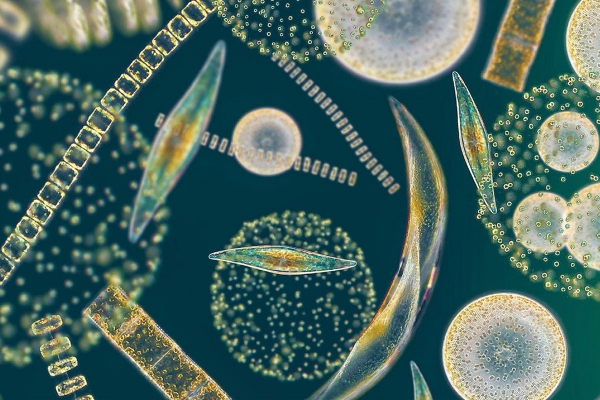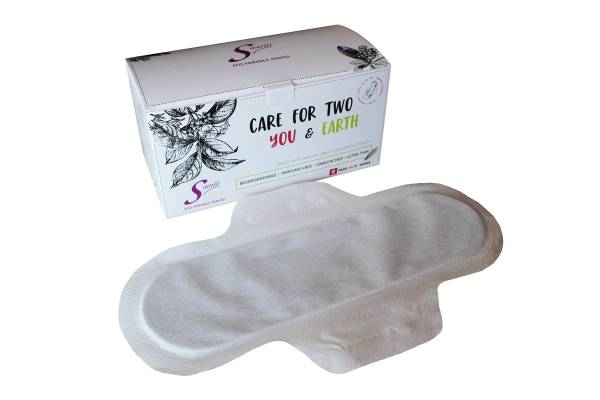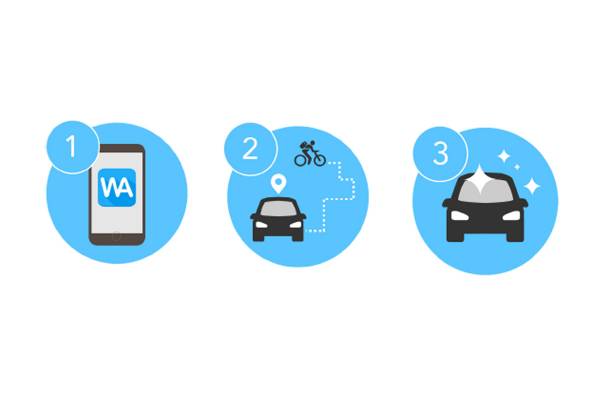Nominated innovations
1000 innovative clean energy solutions and > 150 framework enablers with the potential to deliver more than twelve gigatonnes of avoided emissions by 2030
These assessments are based on a basic avoided emission assessment. The overall concept of avoided emissions is that a solution (product or service) enables the same function to be performed with significantly less GHG emissions. The method of measuring avoided emissions, is to compare a baseline scenario without the enabling solution, with a scenario using the enabling solution; whereby the baseline represents the ‘business as usual’ (BAU) scenario.
These assessments are based on the framework document: The Avoided Emissions Framework (AEF) from September 2020

Heat capture of excess renewable energy generation to avoid oversupply
Polar Night Energy (PNE) combines electricity and heat capture to enable an accelerated development of wind and solar energy. PNE has developed a cost-efficient, safe, and scalable heat storage solution. It is based on an underground sand pit, heated up to 700 degrees Celsius with excess wind or solar power. Heat is provided for buildings and industry via a patented and optimized heat transfer system. Wind and solar power have the disadvantage of being intermittent, resulting in wind turbines being shut down when the electricity prices drop too low due to oversupply. Converting this excess energy to heat offers a cost-efficient and safe way to store the energy for long durations.
Finland

Polar Night Energy
Heat capture of excess renewable energy generation to avoid oversupply
Polar Night Energy (PNE) combines electricity and heat capture to enable an accelerated development of wind and solar energy. PNE has developed a cost-efficient, safe, and scalable heat storage solution. It is based on an underground sand pit, heated up to 700 degrees Celsius with excess wind or solar power. Heat is provided for buildings and industry via a patented and optimized heat transfer system. Wind and solar power have the disadvantage of being intermittent, resulting in wind turbines being shut down when the electricity prices drop too low due to oversupply. Converting this excess energy to heat offers a cost-efficient and safe way to store the energy for long durations.
Currently unavailable

Smart House Solutions
Smart Air Conditioning Solution wrote: We provide a device, which makes your air conditioning equipment smarter, to save user's expenses on electricity. It's an easy to install and use small box, which is connected to the internet and user's mobile phone, it controls an air conditioner and heater in the house. It provider an energy savings up to 40% according to our tests.. Source: EIT Climate KIC's ClimateLaunchPad
Ukraine

Smart Air Conditioning Solution
Smart House Solutions
Smart Air Conditioning Solution wrote: We provide a device, which makes your air conditioning equipment smarter, to save user's expenses on electricity. It's an easy to install and use small box, which is connected to the internet and user's mobile phone, it controls an air conditioner and heater in the house. It provider an energy savings up to 40% according to our tests.. Source: EIT Climate KIC's ClimateLaunchPad
Currently unavailable

Digital rewards platform
Stonnivation wrote: Tourism’s global carbon footprint has increased from 3. 9 to 4. 5 gtco2e, four times more than previously estimated, accounting for about 8% of global greenhouse gas emissions. . This significant rise is due to the quantification of the significant contribution from local transport, shopping and food during their visit. This issue is compounded by day trippers and locals doing similar activities. . Our initial focus is on promoting outdoor tourism in remote and rural locations and rewarding tourism businesses and locals and visitors to make healthier and more environmentally friendly choices. We will re-invest in remote and rural communities to develop infrastructure and resources that support healthy sustainable rural development... Source: EIT Climate KIC's ClimateLaunchPad
United Kingdom

Stonnivation
Digital rewards platform
Stonnivation wrote: Tourism’s global carbon footprint has increased from 3. 9 to 4. 5 gtco2e, four times more than previously estimated, accounting for about 8% of global greenhouse gas emissions. . This significant rise is due to the quantification of the significant contribution from local transport, shopping and food during their visit. This issue is compounded by day trippers and locals doing similar activities. . Our initial focus is on promoting outdoor tourism in remote and rural locations and rewarding tourism businesses and locals and visitors to make healthier and more environmentally friendly choices. We will re-invest in remote and rural communities to develop infrastructure and resources that support healthy sustainable rural development... Source: EIT Climate KIC's ClimateLaunchPad
Currently unavailable

Manufacturers of biodegradable tableware
Recycle-It wrote: We will be manufacturing biodegradable tableware using waste products such as sargassum seaweed and bagasse. So as to cut down on single use plastics pollution throughout the world.. Source: EIT Climate KIC's ClimateLaunchPad
Barbados

Recycle-It
Manufacturers of biodegradable tableware
Recycle-It wrote: We will be manufacturing biodegradable tableware using waste products such as sargassum seaweed and bagasse. So as to cut down on single use plastics pollution throughout the world.. Source: EIT Climate KIC's ClimateLaunchPad
Currently unavailable

Solar-driven ferries
NavAlt envisions a more efficient water transport system which doesn’t use fossil fuels. Navalt’s inland passenger transport solution, a solar-powered ferry, does not pollute the air or water. This also avoids smells from diesel. It has low noise and vibration, lowering rates of noise pollution. The ferry reduces the daily operating cost to 1/40th of a diesel ferry. The innovation has been tested and used for prolonged periods of time, succeeding in the beforementioned factors.
India
≲0.1

NavAlt Solar and Electric Boats Private Limited
Solar-driven ferries
NavAlt envisions a more efficient water transport system which doesn’t use fossil fuels. Navalt’s inland passenger transport solution, a solar-powered ferry, does not pollute the air or water. This also avoids smells from diesel. It has low noise and vibration, lowering rates of noise pollution. The ferry reduces the daily operating cost to 1/40th of a diesel ferry. The innovation has been tested and used for prolonged periods of time, succeeding in the beforementioned factors.
≲0.1Mt CO2e/year

Biomass combustion for heating and cooking
The population in the Himalayas largely base their heating on coal or wood, which is problematic due to deforestation and air pollution among other things. In addition to having using several techniques for improving the efficiency (such as pre-heat airflow channels and bell-effect heat trapping), The Rocket stove has a secondary combustion chamber where unburnt material is used to provide otherwise lost heating energy, which reduces fuel demand by 50% and smoke pollution by approximately 90%.
India
≲0.1

Himalayan Rocket Stove Private Limited
Biomass combustion for heating and cooking
The population in the Himalayas largely base their heating on coal or wood, which is problematic due to deforestation and air pollution among other things. In addition to having using several techniques for improving the efficiency (such as pre-heat airflow channels and bell-effect heat trapping), The Rocket stove has a secondary combustion chamber where unburnt material is used to provide otherwise lost heating energy, which reduces fuel demand by 50% and smoke pollution by approximately 90%.
≲0.1Mt CO2e/year

Microgrid monitoring and optimisation
The innovation is a smart meter that will enable better end-to-end use of solar micro grids. It includes a monitoring system, working with measuring nodes on various parts of the micro grid, that give the user better understanding of the micro grid’s current state. The monitoring system identifies potential issues in the grid so that preventive action can be taken. The system also improves the uptime of the micro grid and thereby the quality of the supply. The smart analytics will help improve the distribution of energy resources within the micro grid.
India
≲0.1

Doorastha Analytics Pvt. Ltd.
Microgrid monitoring and optimisation
The innovation is a smart meter that will enable better end-to-end use of solar micro grids. It includes a monitoring system, working with measuring nodes on various parts of the micro grid, that give the user better understanding of the micro grid’s current state. The monitoring system identifies potential issues in the grid so that preventive action can be taken. The system also improves the uptime of the micro grid and thereby the quality of the supply. The smart analytics will help improve the distribution of energy resources within the micro grid.
≲0.1Mt CO2e/year

Algae based solar efficiency enhancing material
Through the extraction of nanoporous material from algae, a material with unique light altering, absorbing, and releasing properties can be created. It is useful in a wide variety of industries, such as cosmetics and biomaterials. Of potential interest from a perspective of avoided emissions, is that the material has been shown to be able to increase the efficiency of solar panels and cells (PV) both in lab and in field. The coating can be used on solar cells to improve efficiency by 4-5 % depending on the installation scale.
Sweden
≈1

Swedish Algae Factory AB
Algae based solar efficiency enhancing material
Through the extraction of nanoporous material from algae, a material with unique light altering, absorbing, and releasing properties can be created. It is useful in a wide variety of industries, such as cosmetics and biomaterials. Of potential interest from a perspective of avoided emissions, is that the material has been shown to be able to increase the efficiency of solar panels and cells (PV) both in lab and in field. The coating can be used on solar cells to improve efficiency by 4-5 % depending on the installation scale.
≈1Mt CO2e/year

One hundred percent biodegradable sanitary pads
Saathi’s 100% biodegradable sanitary pad is made from an agricultural by-product, banana fiber. The fiber is one of the most absorbent and abundant natural fibers in India. Unlike wood pulp or cotton, the raw materials for Saathi’s sanitary pads don’t require additional land since their feedstock is from agricultural waste. They do not contain any bleaching chemicals, thereby minimizing skin irritation and the release of toxins into the environment upon disposal.
India
≈1

Saathi Eco Innovations India Private Limited
One hundred percent biodegradable sanitary pads
Saathi’s 100% biodegradable sanitary pad is made from an agricultural by-product, banana fiber. The fiber is one of the most absorbent and abundant natural fibers in India. Unlike wood pulp or cotton, the raw materials for Saathi’s sanitary pads don’t require additional land since their feedstock is from agricultural waste. They do not contain any bleaching chemicals, thereby minimizing skin irritation and the release of toxins into the environment upon disposal.
≈1Mt CO2e/year

Mobile car wash
Through the Woshapp app, Woshapp takes the car wash to the car and reduces the amount of water needed for each wash. The company goal is to revolutionize the way we clean cars using sustainable and environmentally friendly methods. On average it takes 1.5 hours to wash a car and in addition about 200 liters of water are consumed per wash. Woshapp service agents cycle to the car and carefully hand wash it in an environmentally friendly way, using only about 400 milliliters of water per wash, thereby saving 99% of the water consumed by a regular car wash. The method provides better quality than a mechanical car wash, avoiding the scratches that can occur.
Sweden
≈1

Woshapp
Mobile car wash
Through the Woshapp app, Woshapp takes the car wash to the car and reduces the amount of water needed for each wash. The company goal is to revolutionize the way we clean cars using sustainable and environmentally friendly methods. On average it takes 1.5 hours to wash a car and in addition about 200 liters of water are consumed per wash. Woshapp service agents cycle to the car and carefully hand wash it in an environmentally friendly way, using only about 400 milliliters of water per wash, thereby saving 99% of the water consumed by a regular car wash. The method provides better quality than a mechanical car wash, avoiding the scratches that can occur.
≈1Mt CO2e/year